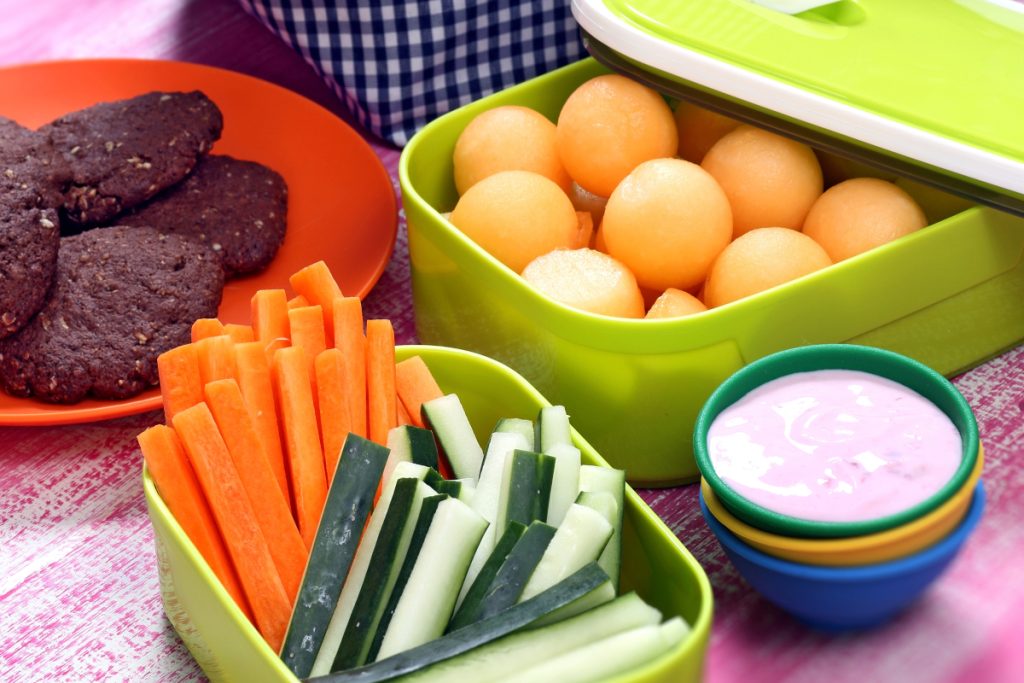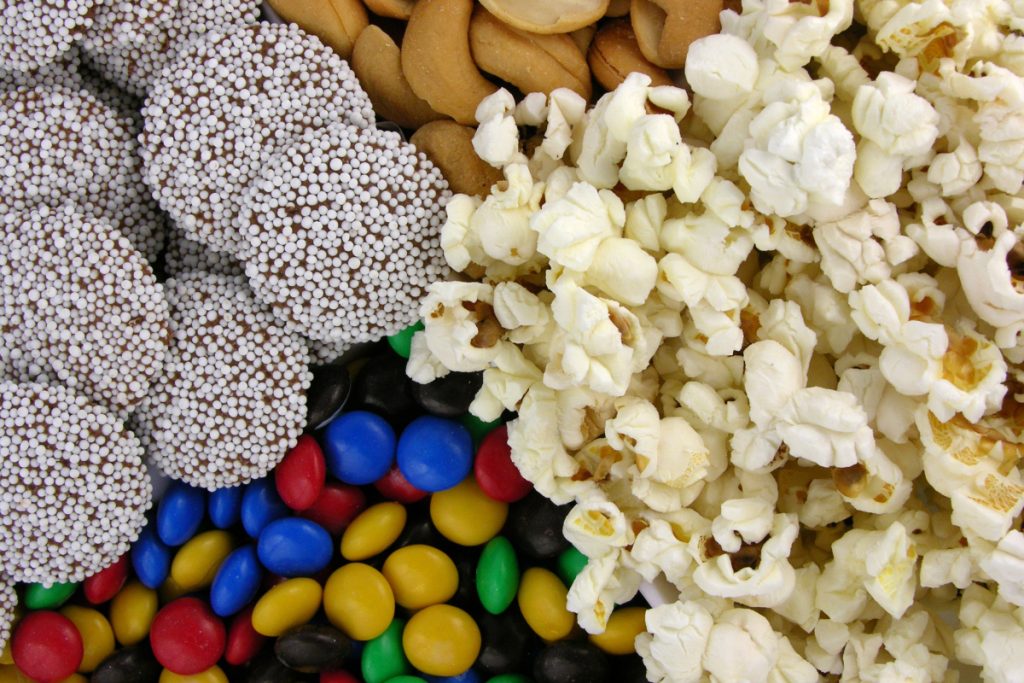Snacking often makes up a large portion of a young child’s diet, which means that the environmental impact of those snacks can be significant. Think about it: the packaging, shipping, and ingredients that go into snacks on supermarket shelves all use a tremendous amount of resources.
Does that mean we should get rid of snacks altogether? Not necessarily: choosing zero-waste snacks for kids is a great way to reduce your family’s impact on the planet while ensuring your children still get the nutrition they need. In fact, zero-waste snacks are actually healthier and more nutritious in most cases!
What is the Zero-Waste Movement?
The zero-waste movement is a philosophy that encourages the elimination of all waste, whether it be packaging, food scraps, or any other materials. The goal is to reduce our reliance on landfills and incinerators and ultimately create a society in which everything is reused or recycled.
The term “zero-waste” can apply to individuals, families, businesses, or even entire cities. It’s a way of thinking about the things we use and consume, and how we can minimize our impact on the planet.
It’s a bit of a misnomer since most people are unable to achieve a lifestyle that doesn’t waste anything. “Zero-waste” applies to the goal, more than to the standard.
There are many benefits to striving for zero waste. In addition to reducing pollution and saving resources, it can also save you money. For example, buying in bulk and avoiding single-use packaging can help you reduce your grocery bill.
Zero-waste snacks for kids are a great way to teach them about sustainability and healthy eating habits. Not only do they help to reduce the amount of waste produced, but they are also nutritious and delicious! Here are some tips for making zero-waste snacks for your little ones.

Waste Less Packaging
Packaging is a huge source of waste when it comes to food – especially snacks. To make zero-waste snacks, try to use as little packaging as possible. There are a few ways to use less packaging:
Use your own reusable containers.
When packing snacks for school or on a trip, be sure to bring along reusable containers. This way, you can avoid using disposable wrappers or bags. Reusable silicon food bags are also a great choice.
Glass jars are always a good choice and can be used for anything from applesauce to nuts and seeds.
Don’t forget about drinks – silicon water bottles, reusable straws, and insulated mugs are all great options for waste-free sipping.
Stainless steel lunch boxes with a silicon coating are also a great way to reduce waste. Not only are they durable, but they can also be used for hot and cold foods.
You can also get wraps made from sustainable materials like beeswax or cotton. These are great for use in place of plastic wrap, such as for leftovers, wraps, and sandwiches.
Use unpackaged fruits and vegetables.
Fruits and vegetables that come in their own packaging, like apples or bananas, are great for snacks on the go. They don’t come with any packaging. The lowest-waste version of these items is always going to be at a farmer’s market or at a farm where you can pick your own food.
Reuse and Recycle Any Packaging
When you do use snacks that have the packaging, be sure to recycle or reuse them whenever possible. For example:
- Reuse zippered pouches for future snacks or storage.
- Turn paperboard packaging into note cards or gift tags.
- Use plastic containers for arts and crafts supplies.
- Use wrappers to weave items like jewelry, placemats, and bags.
- Turn foil packaging into fun shapes or decorations.
- Reuse jars for small items or pantry storage.
Keep it Local
Sourcing your food from as close to home as possible helps you waste fewer resources like fuel and packaging. You can source your snacks locally by:
- Shopping at bulk food stores near you. Bulk food stores are great places to find zero-waste snacks. Many of these stores sell unpackaged fruits and vegetables, as well as healthy snacks in bulk.
- Supporting local businesses. Instead of purchasing mass-produced snacks, try to buy local snacks whenever possible. Similarly, support locally-owned restaurants and bakeries over chain establishments.
- Grow your own food. One of the best ways to reduce your food waste is to grow your own fruits and vegetables. This way, you can be sure that your snacks are fresh and nutritious. Your children can even help out in the garden. Try growing some kid-friendly favorites like strawberries, watermelons, or carrots.
Make Healthy Snacks
There are plenty of recipes online for healthy, zero-waste snacks that your kids will love. Here are a few ideas to check out if you’re not sure where to start.
If you don’t want to make anything yourself various are sold either in smaller snack bags or in bigger bags. Get a bigger bag so you can separate and put it in reusable bags or containers.
- Granola bars
- Trail mix
- Fruit leather
- Muffins
- Smoothies
- Crackers
- Cookies
- Raw veggie slices
- Parfait
- Popcorn

Using Sustainable Ingredients
Choosing sustainable ingredients is another great way to make zero-waste snacks. To do this, you can:
- Purchase organic ingredients. Organic foods are grown without the use of harmful pesticides and fertilizers. They are also typically GMO-free.
- Support fair trade practices. Fair-trade-certified foods are produced in a way that is environmentally and socially responsible.
- Use leftover oatmeal to bake. Have leftover oatmeal? Use it to bake healthy, zero-waste cookies or bars! This is a great way to use up food that would otherwise go to waste.
- Use fruit scraps to make zero-waste snacks. You can dehydrate them, make jam, add them smoothies or use them to make fruit leather.
- Make small batches. When making snacks at home, only make as much as you need. This will help to reduce food waste.
- Avoid using ingredients that are being overused or are otherwise unsustainable. For example, almonds are a common ingredient in many snacks. However, almond production is very water-intensive, so you may want to choose another type of nut or seed instead to lower your impact.
More Tips for Zero-Waste Snacking
When it comes to zero-waste snacking, a little creativity goes a long way. Here are some more tips that will help you along the way:
- Teach your kids about sustainability. One of the best ways to reduce food waste is to teach your children about sustainability. Talk to them about the importance of reducing, reusing, and recycling. You can even involve them in activities like composting or gardening. By teaching your kids about sustainability, you can help them make better choices about the food they eat and the snacks they bring with them.
- Choose whole foods over processed snacks. Whole foods, like fruits and vegetables, are not only healthy but they’re also less likely to create waste.
- Repurpose food scraps. If you have food scraps, don’t throw them away! You can use them to make zero-waste snacks like fruit leather or vegetable chips.
It’s not always easy to reduce the amount of waste we produce, but with a little creativity and effort, it is possible. In this article, we’ve provided some tips for making zero-waste snacks for kids. We hope you find these ideas helpful and that they inspire you to take further steps toward reducing your own waste production.
Do you have any favorite zero-waste snacks for kids? Share them with us in the comments below!






Leave a reply